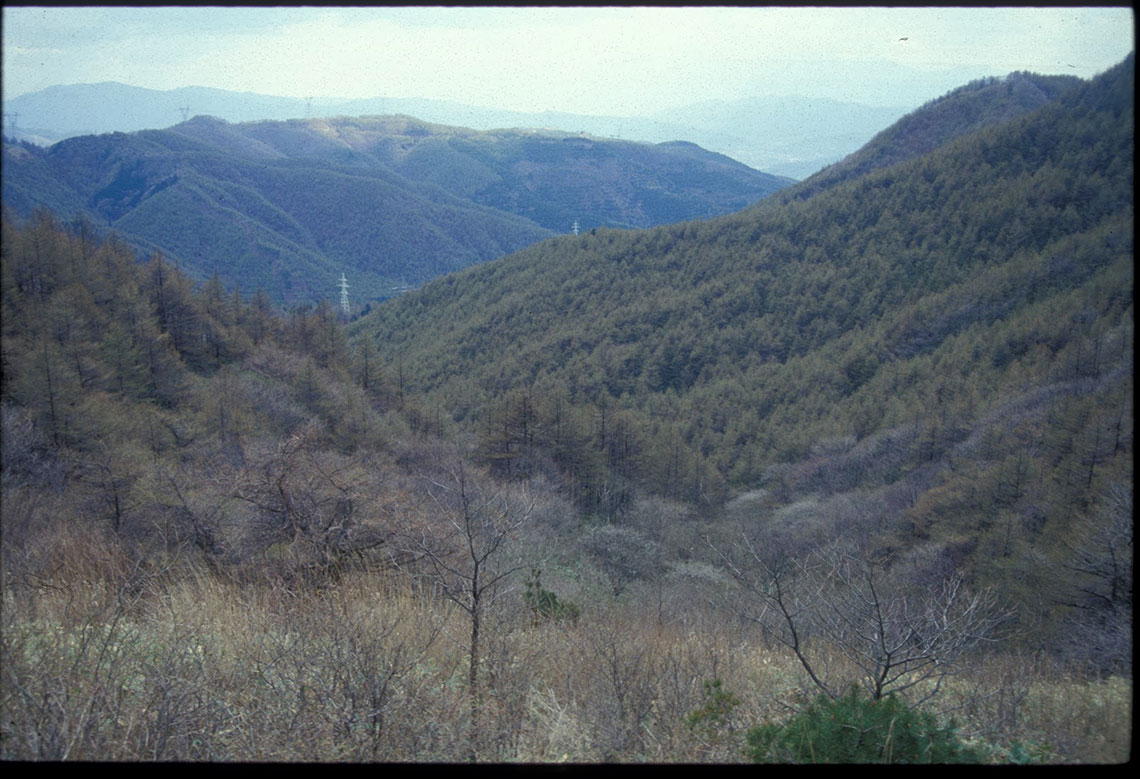Wada-toge is the highest of the passes. The view from the top, in good weather, offers commanding views in both directions. To the west, the tortuous climb from Shimo-suwa and, beyond that, Shiojiri-toge are visible. The east, Mt. Asama dominates the broad plateau and beyond that, Usui-toge presents the final challenge before the descent to the Kanto plain.
The descent is steep, but combines pleasant footpath, busy modern roads, and a long stretch of the original road surfaced withishidatami. Along the way is a reconstructed tea house which offers a rest in a modest setting, but no refreshment. Rejoining the highway, Wada post-town is eventually reached, some twelve miles after leaving Shimo-suwa. Despite the difficulty of Wada-toge, this is one of the longest stages between post-towns.
Although Wada was originally a small post-town in terms of population, the need for travelers to rest before or after attempting Wada-toge led to a considerable number of unofficial tea houses. The settlement therefore spread out along the road further than most other post-towns. Today, however, Wada is no more than a small village, becoming a source of labor for the ski resorts in the hills above. The honjin served as a town office until it was reconstructed in the 1980s. It is now a museum which features items from the visit of Princess Kazunomiya, including a pair of her straw sandals.
Beyond Wada, the highway cuts through a widening valley filled with rice fields. Many farm houses still have thatched roofs presenting an aspect of traditional Japan rarely seen. Even the bus stops on the modern highway have been built with thatched roofs. After five miles, Nagakubo is reached.



